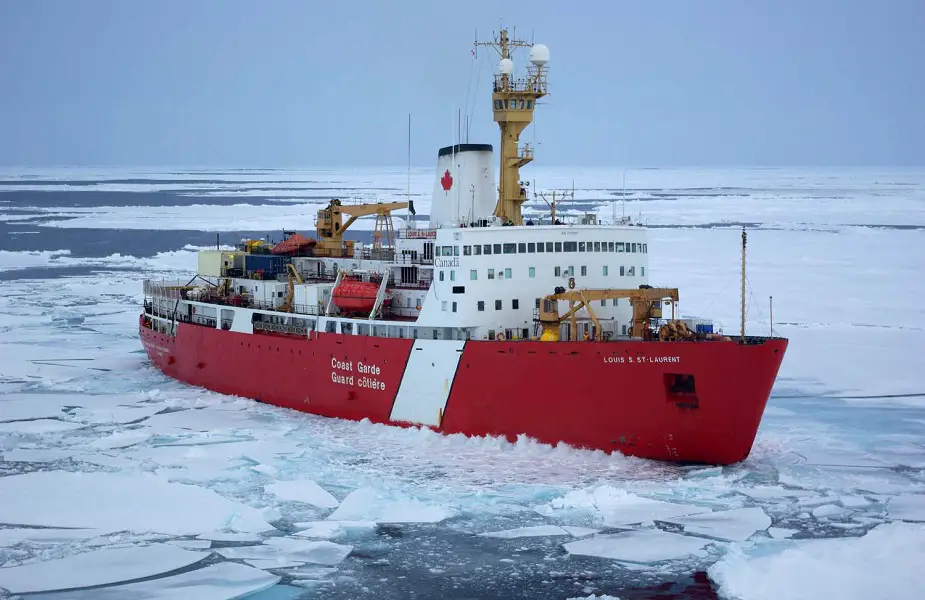Breaking news
UK: Royal Navy sailors to get Canadian polar training as part of a new collaborative agreement.
More Royal Navy sailors will be trained in taking ships into challenging polar waters thanks to a new collaborative agreement with the Canadian Coast Guard.
Follow Navy Recognition on Google News at this link
 Canadian Coast Guard vessel in the Arctic (Picture source: Canadian Coast Guard)
Canadian Coast Guard vessel in the Arctic (Picture source: Canadian Coast Guard)
Royal Navy's sailors will benefit from Canadian training in navigating through icy waters, breaking sheets of ice where necessary, while Canadian Coast Guard personnel will have operational training opportunities and gain experience with crewless technology with the Royal Navy.
The agreement was signed between the two NATO nations at the Canadian Coast Guard’s (CCG) headquarters in Ottawa by its Commissioner, Mario Pelletier, and Second Sea Lord Vice Admiral Nick Hine.
“I am delighted to sign this agreement that will see the Royal Navy and Canadian Coast Guard work even closer together in the Arctic, sharing and developing our ice experience, as we strive to become ever more interoperable and interchangeable,” said VAdm Hine.
“The Canadian Coast Guard welcomes the opportunity to build on the existing close relationship between Canada and the United Kingdom. Through this Memorandum of Understanding, we will benefit from the Royal Navy’s operational experience and expertise, and we look forward to sharing our skills and knowledge of the Arctic,” said Commissioner Pelletier.
 Canadian Coast Guard vessel in the Arctic (Picture source: Canadian Coast Guard)
Canadian Coast Guard vessel in the Arctic (Picture source: Canadian Coast Guard)
The agreement follows an initiative in early 2020 which saw several watchkeeping officers from HMS Protector, the UK’s sole ice patrol ship, gain valuable experience in ice operations aboard a CCG vessel.
The Canadian Coast Guard maintains a constant presence in Arctic waters during the navigable season, and in 2020 alone its icebreaking fleet collectively sailed the equivalent of nearly five and a half times around the world through the waters of the perilous region.
The Canadians have a large fleet of around 20 icebreaking vessels, from hovercraft to heavy and light icebreaking and long endurance ships, to keep marine traffic moving safely through or around ice-covered waters.
Their fleet of icebreakers helps keep Canadian ports open for business year-round, freeing vessels beset in ice, maintaining routes, escorting ships through ice-covered waters and organising convoys in favourable conditions among other responsibilities.
The sharing of the Canadian Coast Guard’s wide experience and expertise will mean British sailors are better-equipped when sailing to the frozen region.
In recent years the Royal Navy has demonstrated renewed interest in the Arctic region given its key strategic importance to the security of the UK.
Warships are a regular presence in the region, while Royal Marines train in Norway annually as the UK’s specialists in the cold weather warfare.
HMS Lancaster recently returned from a on a 3,000-mile round-trip through the Norwegian Sea and into the Arctic Circle – the latest Royal Navy vessel to head to the High North over the past few years.


























